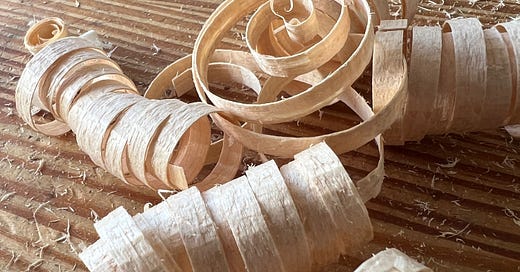Nearly every piece of wood in this cupboard (and the other Eastern European pieces I’m building) uses tongue-and-groove joinery.
All the side pieces of the cupboard, the back, the bottom, the shelf and the piece’s top are all made up of narrow boards that are tongued and/or grooved. And sometimes on both long edges plus the board’s ends.
As I got into the (won’t say groove, won’t say groove) swing of things, I realized I should write a standalone chapter on the nuances of the process. It’s easy to get (literally) turned around and create a wonky surface. Or you don’t keep the tongue-and-grove plane adjusted well, and the groove or tongue wander.
So here is a detailed tutorial on creating the tongue-and-groove joint with a No. 48 plane, which was designed for this operation.
Keep reading with a 7-day free trial
Subscribe to The American Peasant to keep reading this post and get 7 days of free access to the full post archives.




